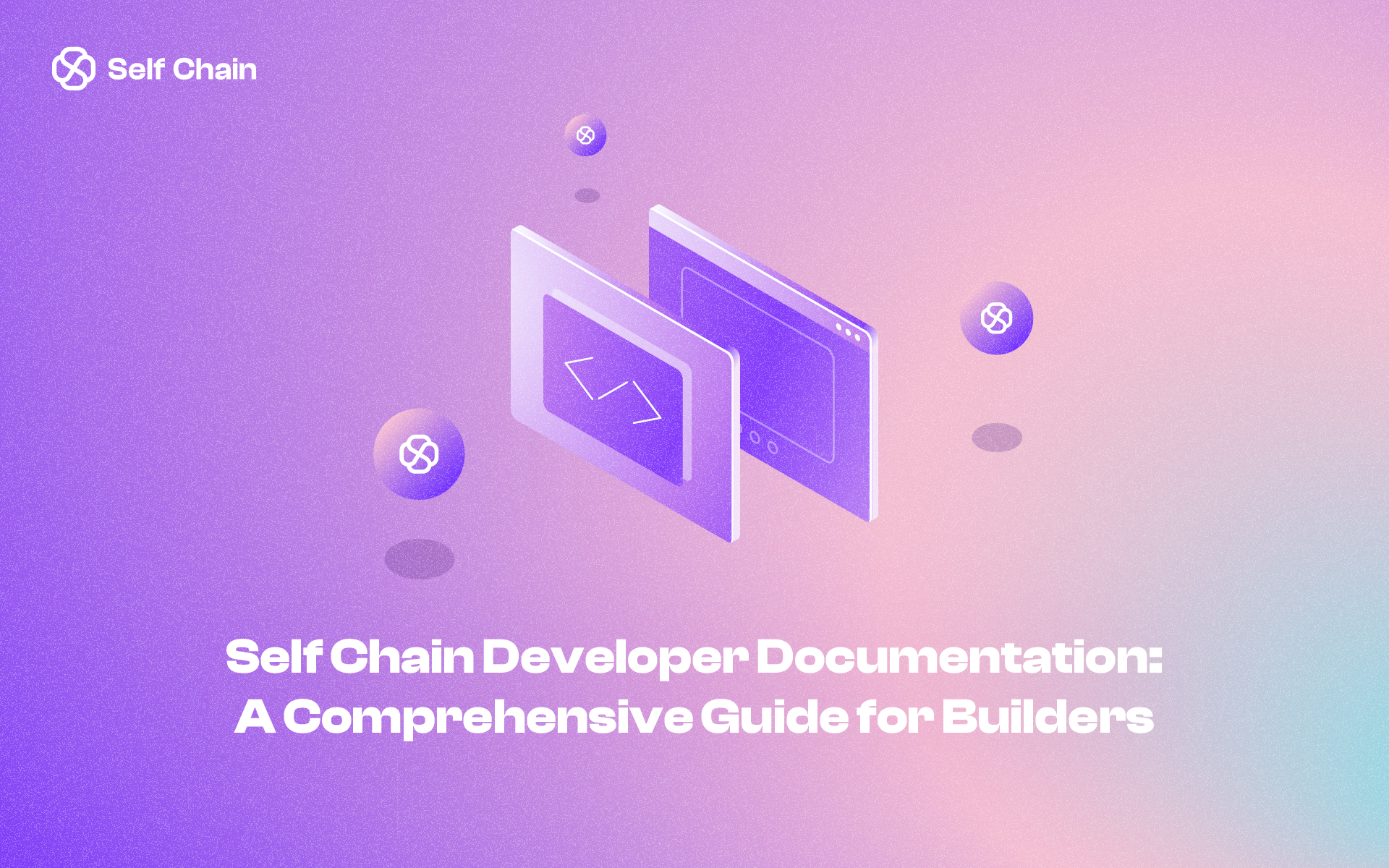Self Chain Developer Documentation: A Comprehensive Guide for Builders
At Self Chain, we are dedicated to supporting developers in building the next generation of decentralized applications on our Modular Intent-Centric Layer 1 blockchain.

At Self Chain, we are dedicated to supporting developers in building the next generation of decentralized applications on our Modular Intent-Centric Layer 1 blockchain. To facilitate this, we are thrilled to introduce the Self Chain Developer Documentation—an all-in-one resource that provides a comprehensive guide to all aspects of developing on Self Chain.
What’s Included in the Developer Documentation?
The Self Chain Developer Documentation covers a wide range of topics, offering everything developers need to start building, testing, and deploying applications on Self Chain. Here’s a breakdown of what you’ll find:
1. Self Chain Networks
The documentation provides detailed information about the different networks on Self Chain, including:
- Mainnet: The live production environment where real-world applications and activities take place.
- Devnet: A development network for early-stage testing and experimentation, where developers can test new features and perform integration testing.
- Localhost: Developers can run local chains on their machines for isolated testing and development purposes.
Each network comes with links to explorers, APIs, and RPC endpoints, allowing developers to easily connect and interact with the blockchain.
2. Frontend dApps Development
For those looking to develop the frontend of decentralized applications, the documentation includes:
- Wallet Connection: Self Chain supports a range of libraries like CosmosKit and CosmJS for seamless wallet integration. These tools allow developers to connect dApps to popular cross-chain wallets such as Keplr and Leap.
- RPC Endpoints: A section detailing the RPC endpoints developers need to interact with Self Chain. These endpoints enable dApps to broadcast transactions, query chain data, and more.
- API Endpoints: The API documentation provides developers with all the methods, parameters, and data formats needed to interact with the blockchain via Self Chain APIs.
- CLI References: A command-line interface guide that helps developers deploy contracts, interact with the network, and perform various tasks directly through the command line.
3. Faucet
The Self Chain Devnet Faucet allows developers to request test tokens for experimenting in the Devnet environment. The faucet section of the documentation provides a quick summary and step-by-step instructions on how to request these tokens via Discord.
Why is This Important for Developers?
Building on Self Chain provides developers with the opportunity to utilize cutting-edge technologies such as MPC-TSS, Account Abstraction, and Intent-Centric architecture. With the launch of the Self Chain Developer Documentation, we aim to simplify the development process, making it easier to access the resources, tools, and support you need to bring your ideas to life.
Whether you’re deploying smart contracts, building dApps, or experimenting with multi-chain support, the documentation is your go-to resource for everything Self Chain.
For more details and to explore the documentation, visit the Self Chain Developer Documentation.
About Self Chain
Self Chain is the first Modular Intent-Centric Access Layer1 blockchain and keyless wallet infrastructure service using MPC-TSS/AA for multi-chain Web3 access. The innovative system simplifies the user experience with its intent-focused approach, using LLM to interpret user intent and discover the most efficient paths.
Self Chain ensures that onboarding and recovery are effortless with keyless wallets that grant users complete self-custody over their assets. In addition, it provides automated rewards to dApps when they efficiently resolve user intent, further enhancing the user experience. Moreover, Self Chain incorporates Account Abstraction with MPC-TSS to provide secure signing and reduce transaction fees. It's a platform that redefines blockchain interaction, making it more secure and user-friendly for everyone.
In a world where blockchain technology is becoming increasingly essential, the user experience remains a critical factor in its adoption. Intents and Keyless Wallets are set to transform the landscape, making blockchain interactions more accessible, efficient, and secure. As we move forward, the blockchain industry has the opportunity to provide users with a seamless and enjoyable experience, unlocking the full potential of this groundbreaking technology.
